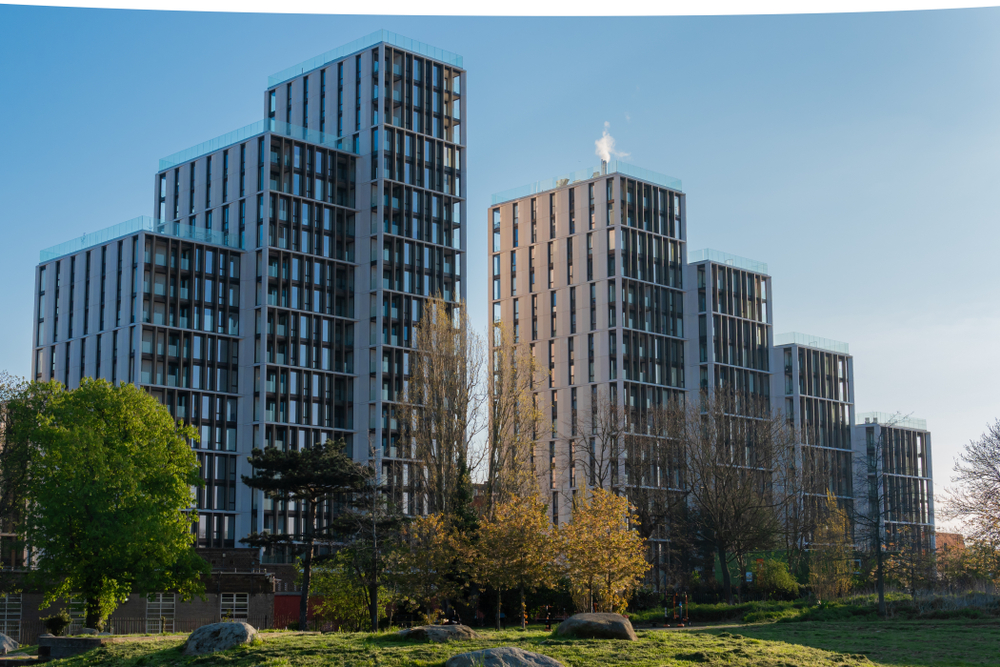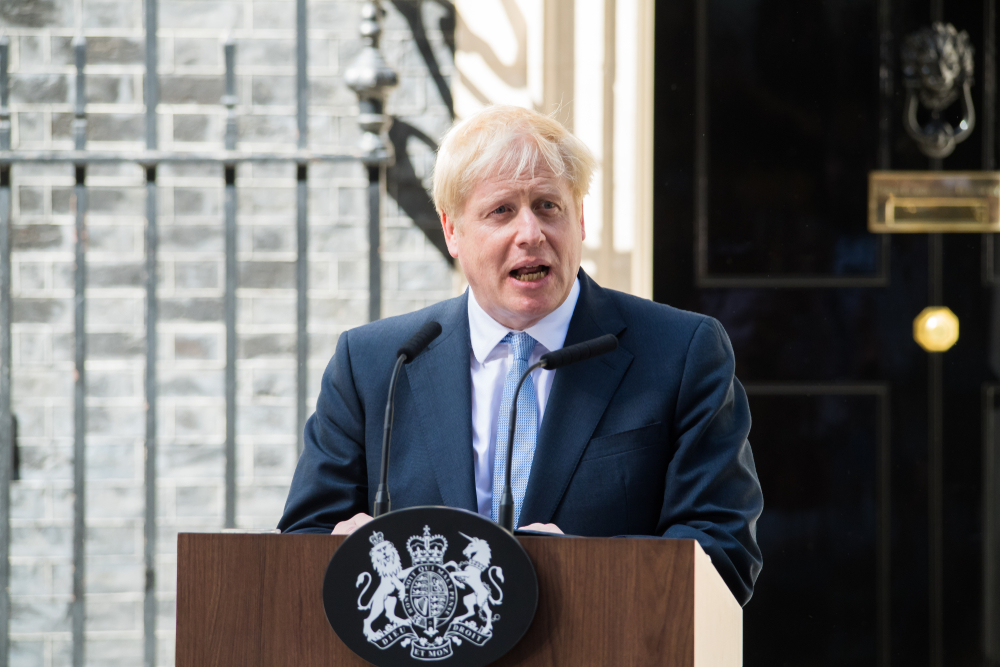Build to Rent sector in the UK offers a glimmer of hope for the industry
With many young professionals prioritising mobility over mortgages, the Build to Rent (BTR) sector is piercing the overall gloom of the UK real estate industry. It’s a shining light that is increasingly catching the eye of Asian investors

The sight of shuttered businesses and lifeless office blocks is now a common sight along the UK’s high streets—an unsettling reminder of the damage wrought by the pandemic and the poor fist the country’s Conservative government has made of handling it.
The pandemic has all but brought the country’s real estate sectors to a standstill with most analysts expecting total investment to drop 30% year-on-year. Even a fleeting post-lockdown bump in housing transactions is being put down to pent-up demand as prices are predicted to fall 8% compared with 2019.
However, decoupled from this moribund status quo has been the nascent build-to-rent (BTR) market, in which the last 12 months have proven to be the most active.
Defined as residential properties owned by the developer and purpose-built for renting—with amenities like gyms and common rooms, all-inclusive bills, and professional management—the BTR market has shifted from the fringes of portfolios to become one of the country’s most lucrative real estate assets.
The subsector has not only stood firm but flourished. There are now more than 46,000 BTR properties, with a further 84,000 either under construction or with planning consent, reports property consultancy Knight Frank. In 2020, a record £4bn is slated to be invested in BTR homes nationwide.
In London, the balance is gradually swinging from tolerating hours-long commutes to finding alternative, affordable accommodation in more central locations—and affordability is the key
James Mannix, head of residential development and investment at Knight Frank, believes BTR properties sustained their popularity in 2020 due to a rise in “the importance of wellbeing, wellness, and social value for residents” during the lockdown period.
“Longer-term, as tenant priorities change as a result of Covid-19, we expect the service-driven model adopted by operators, and valued by residents, to emerge as offering clear advantages over the traditional buy-to-let sector,” says Mannix.
Even before the pandemic outbreak, BTR was among the UK’s best-performing property segments. This is due in part to its appeal amongst the younger generation and growing transit workforce who are shunning the traditional lifestyle choices of previous generations.
“In London, the balance is gradually swinging from tolerating hours-long commutes to finding alternative, affordable accommodation in more central locations—and affordability is the key,” explains real estate value management specialist Stephen Oehme.
“Homeownership has, for many, become oppressing or financially inviable. Increasingly, they are choosing mobility over mortgages.”
Beyond the buoyant demographic tailwinds and urbanisation rates, developers have been incentivised in recent years by such government initiatives as the Private Rented Sector Housing Guarantee Scheme.
Aimed at accelerating the growth of investment in the private rented sector by institutional investors, a government-guaranteed bond programme will be used to finance the purchase of housing units, with a minimum project size of £10m but no maximum debt limit, after they have been built.
The first breakthrough for the scheme came in 2013 when PruPRIM, the real estate investment management arm of M&G Investments, acquired a £105.4m residential portfolio owned by the Berkeley Group. The deal was partially backed by the Homes and Communities Agency—later replaced by Homes England and the Regulator of Social Housing—the non-departmental public body that funds new affordable housing in the country.
Since then, domestic investors have dominated the BTR market in the UK, accounting for a significant proportion of deals completed since 2015, according to Knight Frank data. International capital, however, is gradually chipping away at that market share, as global investors continue to seek stable cash flow, while development volumes in the UK rise.

Investors from Asia Pacific are increasingly getting in on the action. In 2018, Invesco Real Estate ploughed £400m into the London BTR sector. The global real estate investment manager teamed up with Malaysia-listed EcoWorld International—in which Singapore developer GuocoLand holds a 27% stake—to fund the venture’s 1,000-unit BTR pipeline, representing the entire BTR component of two sites at Kew Bridge in West London and Barking Wharf in East London.
Heng Leong Cheong, chief executive of EcoWorld London—the company’s UK subsidiary—explained that the mismatch between the homes Londoners need and those available, particularly homes catering to the rental demographic, largely drove the firm to enter the market. “At present, each of the leading BTR companies in London has less than 5,000 homes under management,” he says. “Our ambition is to secure a pipeline of over 10,000 homes in the next five years and be the BTR market leader.”
As the BTR market expands beyond London, some of Asia’s largest developers are beginning to take advantage of fresh opportunities elsewhere in the UK.
Singapore-based City Developments Limited, which acquired a £15.4m freehold site in Leeds in early 2019, plans to develop a 664-unit BTR residential project with retail space.
Such launches affirm the appetite from overseas institutional investors as they emerge stronger post-pandemic. With low-interest rate environments across economically advanced countries such as the UK, it could be the ideal time for these investors to tap into the market.
“The competition in this asset class is already significant and growing,” Oehme says. “Many local UK developers are trying to step outside their experience to deliver BTR properties. So this is a huge opportunity for Asian developers looking for longevity and continuous revenue streams.”
Analysts have also criticised developers and policymakers for treating BTR as a premium product by primarily targeting wealthy millennials at the expense of providing adequate affordable housing. Indeed, 2019 research from property consultancy JLL showed that tenants, on average, pay an 11% rental premium compared with standard private rental properties.
Still, both the public and private sector are pushing ahead with the message that BTR is a panacea for the UK’s residential industry. Most analysts are confident the sector will remain resilient for the foreseeable future: global investors continue to seek stable cash flow as development volumes rise in the UK, and an investment pipeline of more than £1.4bn worth of deals are currently under offer.
“The capital committed in 2020 has come from both new and established market players and is testament to the investment opportunity afforded by the sector,” says Mannix. “There is no doubt that the relationship between solid sources of capital and the long-term needs of renters is symbiotic.”
This original version of this article appeared in Issue No. 163 of PropertyGuru Property Report Magazine
Recommended
Why everyone is moving to Selangor and Johor: Malaysia’s real estate comeback
Malaysia’s upturn in fortunes is especially prevalent in secondary destinations such as Selangor and Johor
Penang’s silicon boom: How the US-China tech war is supercharging local real estate
Penang’s booming semiconductor industry has created ripples within the local real estate sector
New leader, new opportunities: How Hun Manet is shaking up Cambodia’s real estate game
Hun Manet is overseeing decent economic growth and widening access to the country’s real estate market for foreigners
Singapore embraces inclusive housing reforms amid resilient demand
The Lion City’s regulatory strength continues to exert appeal for international investors








